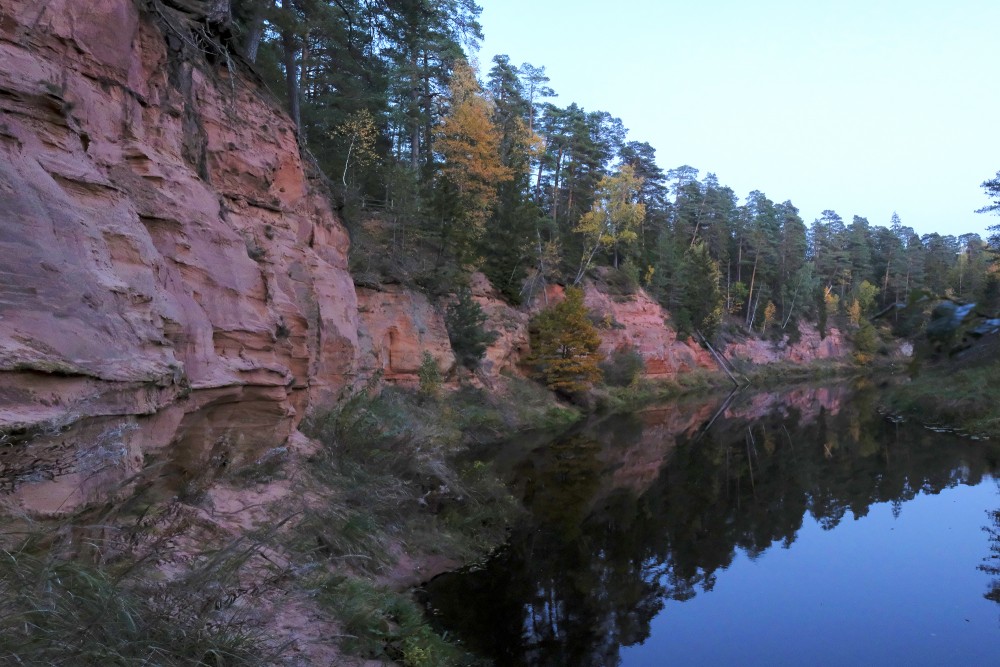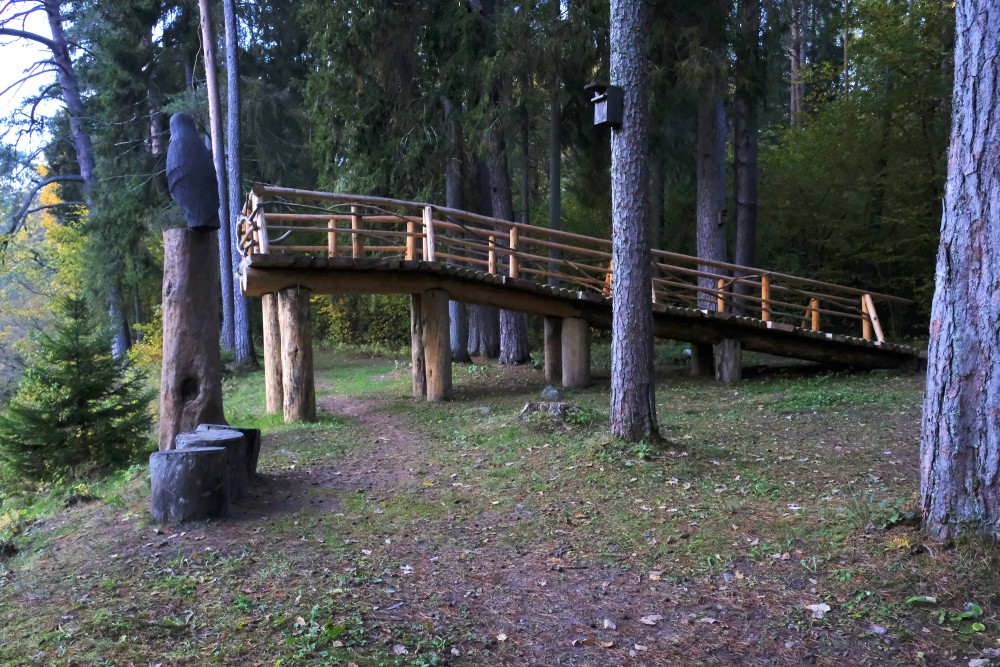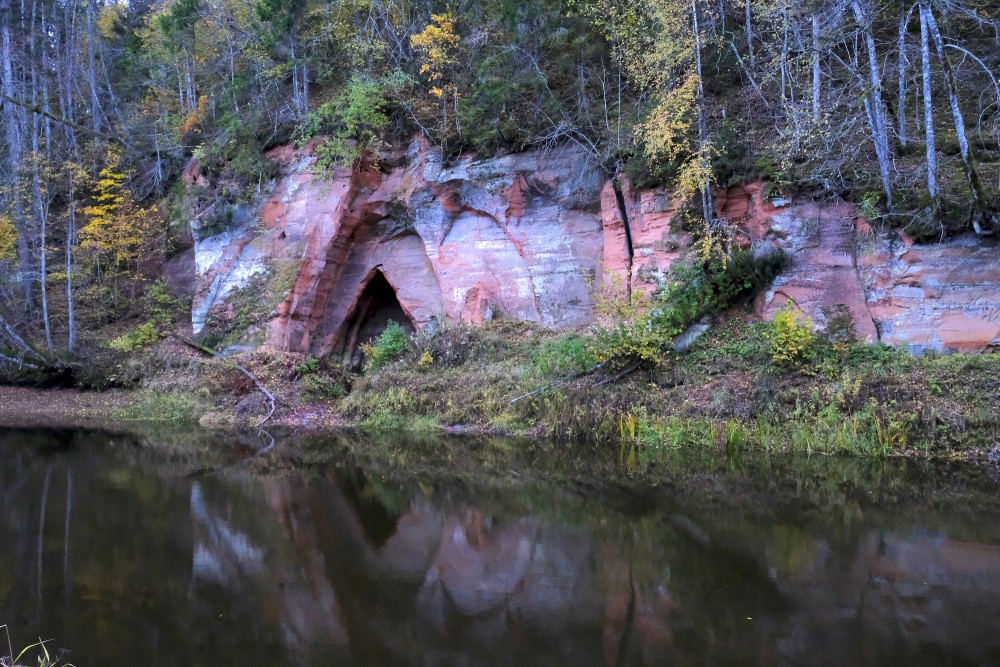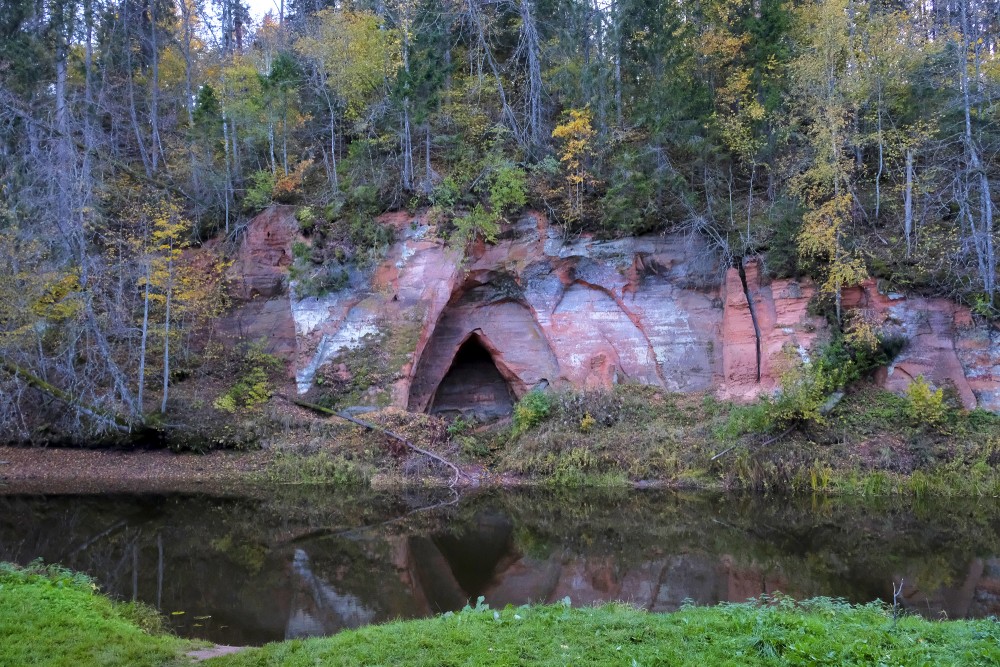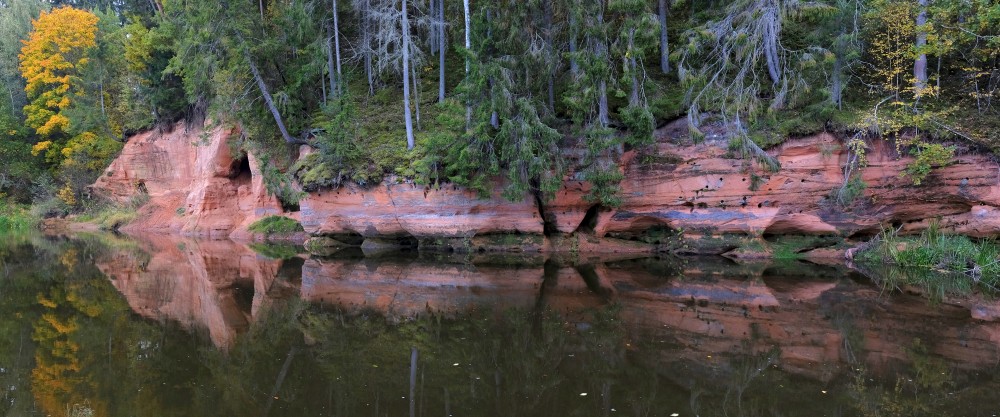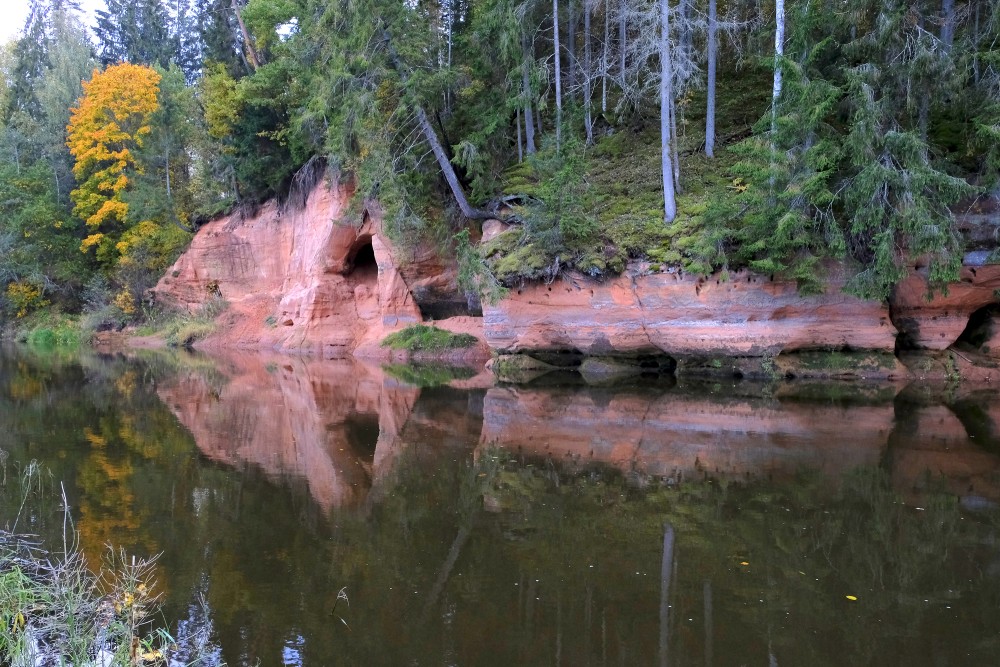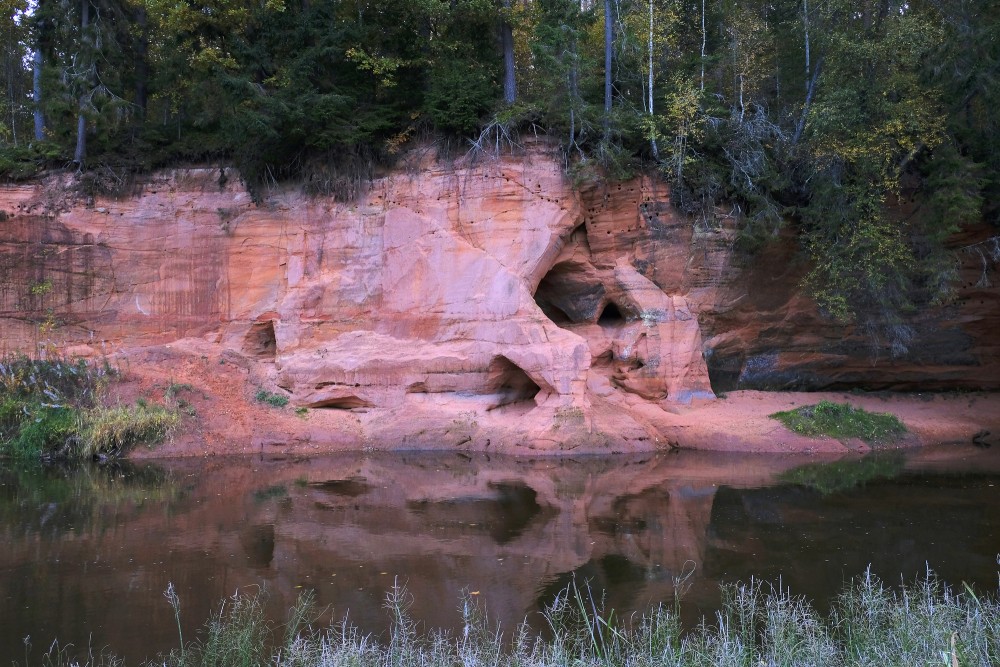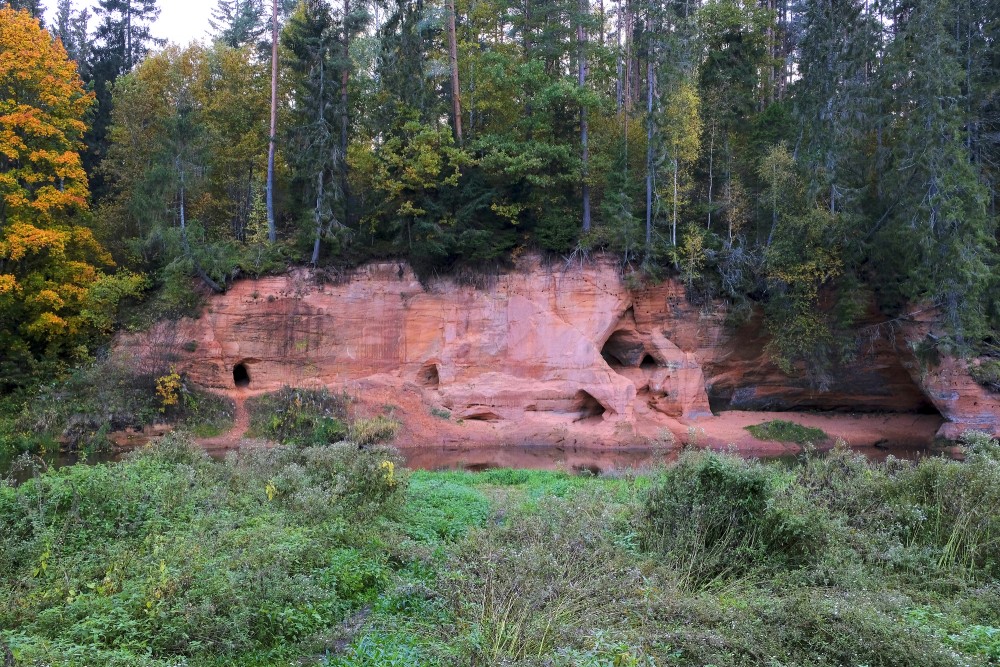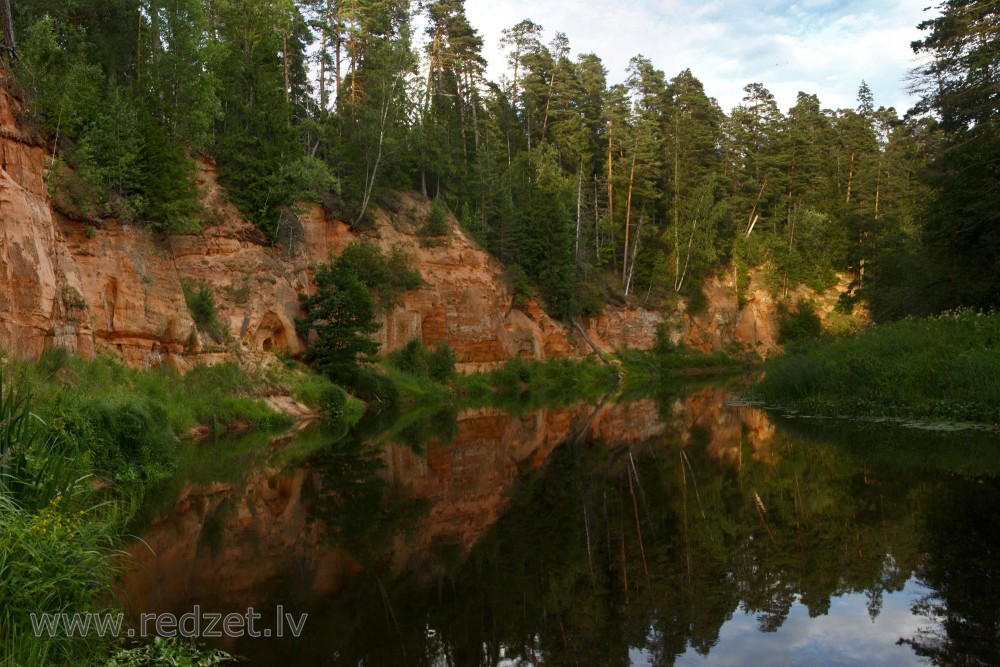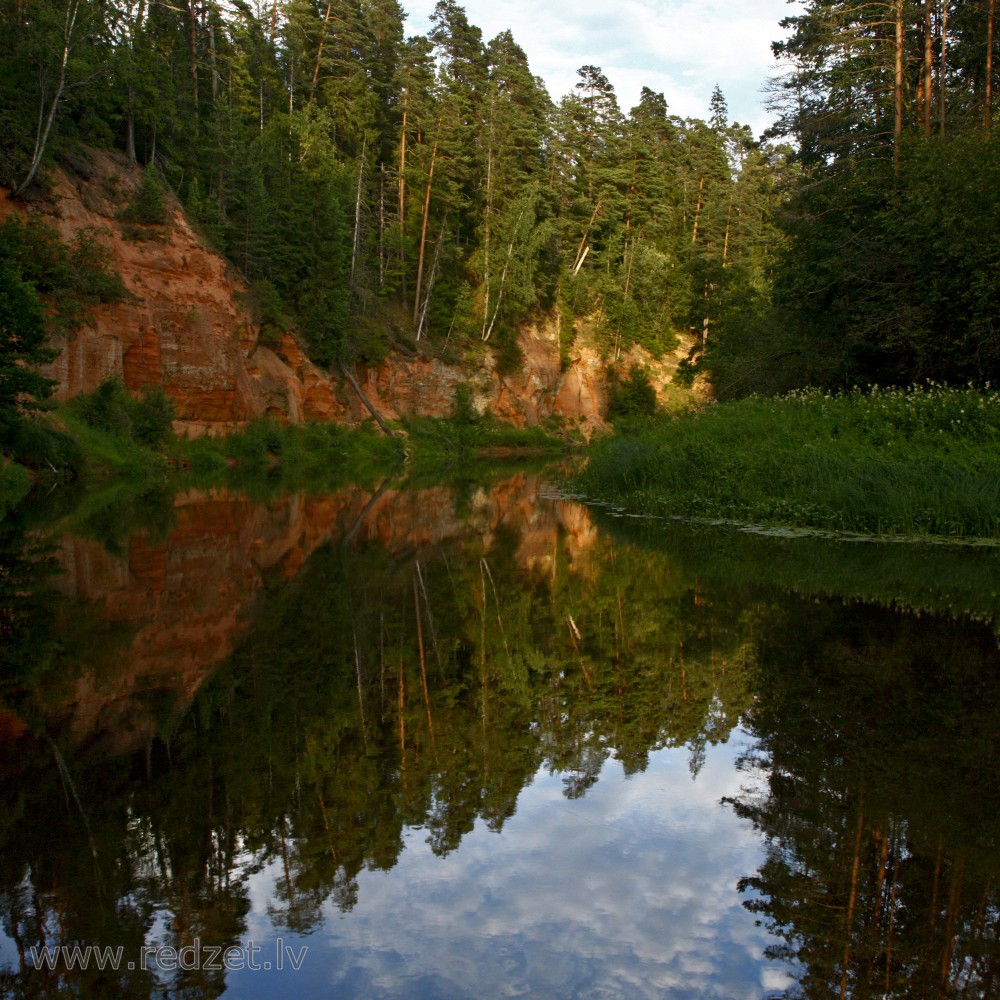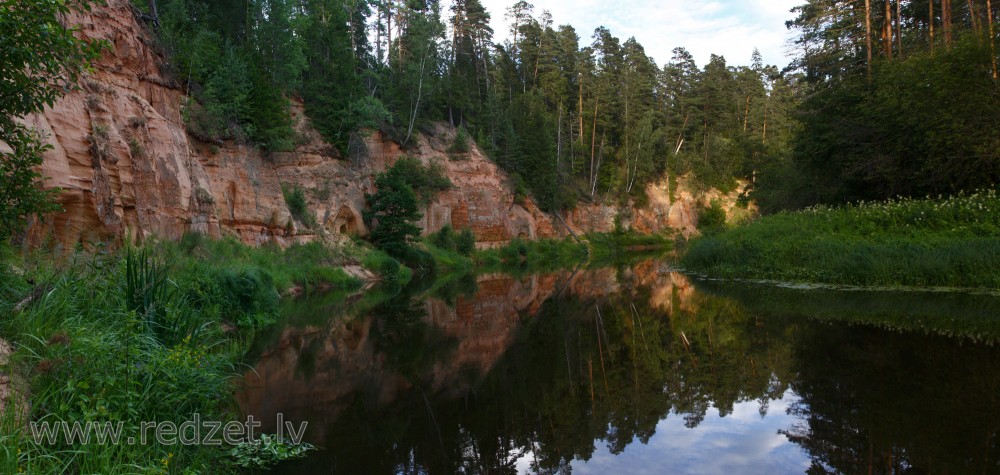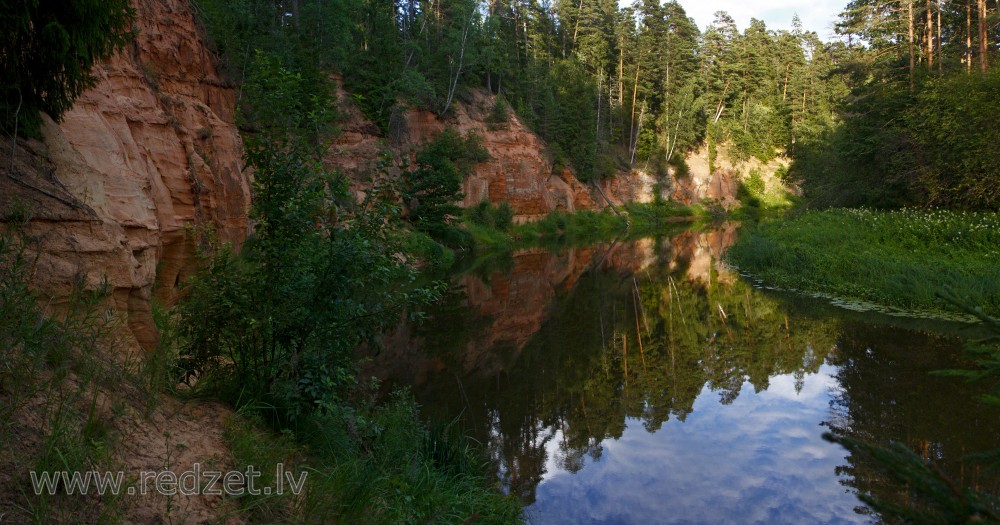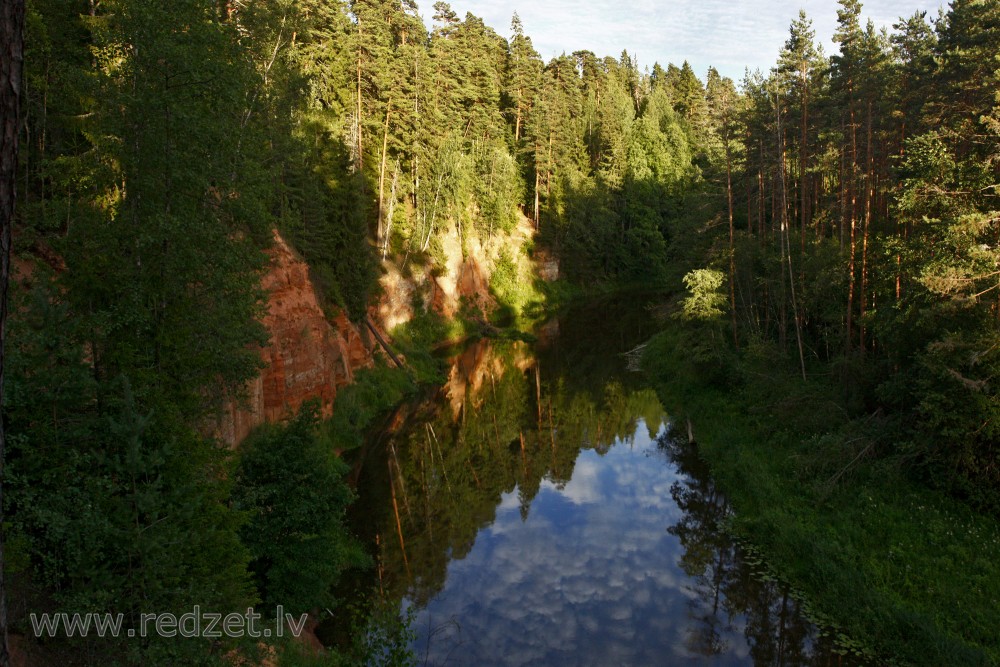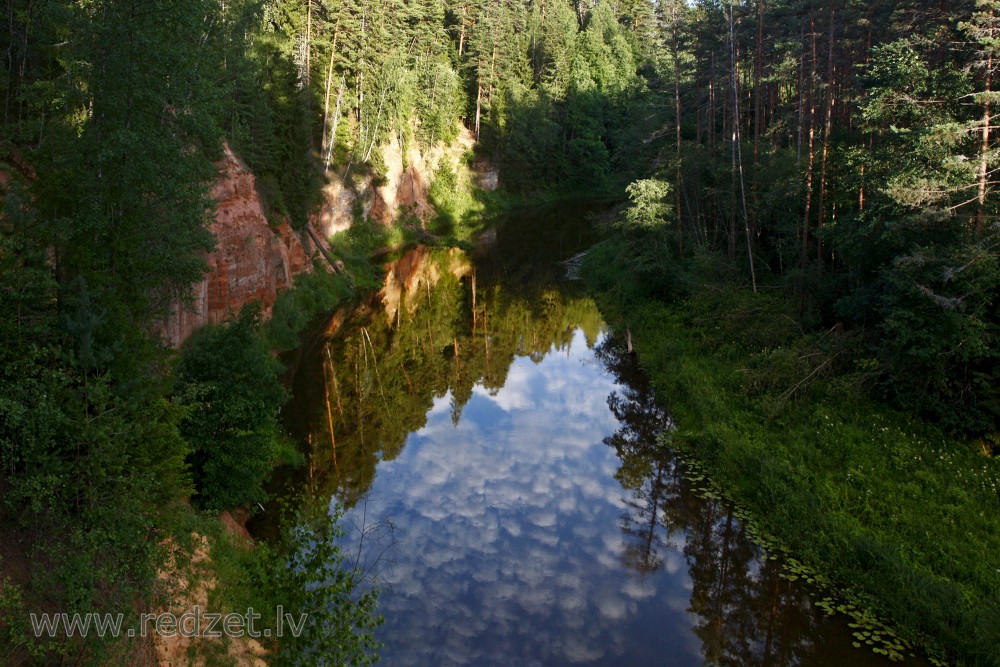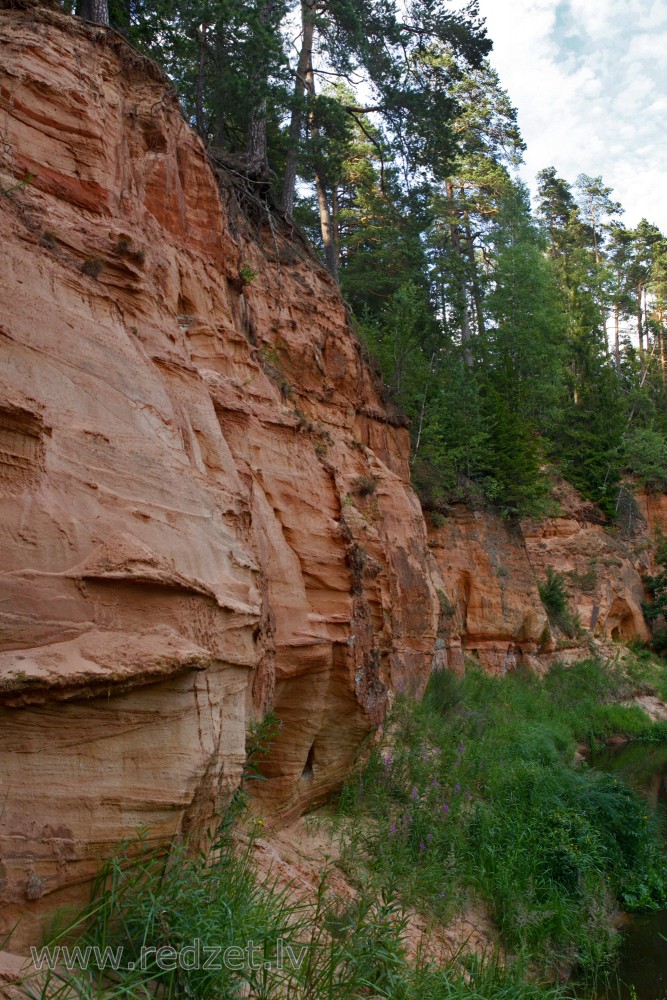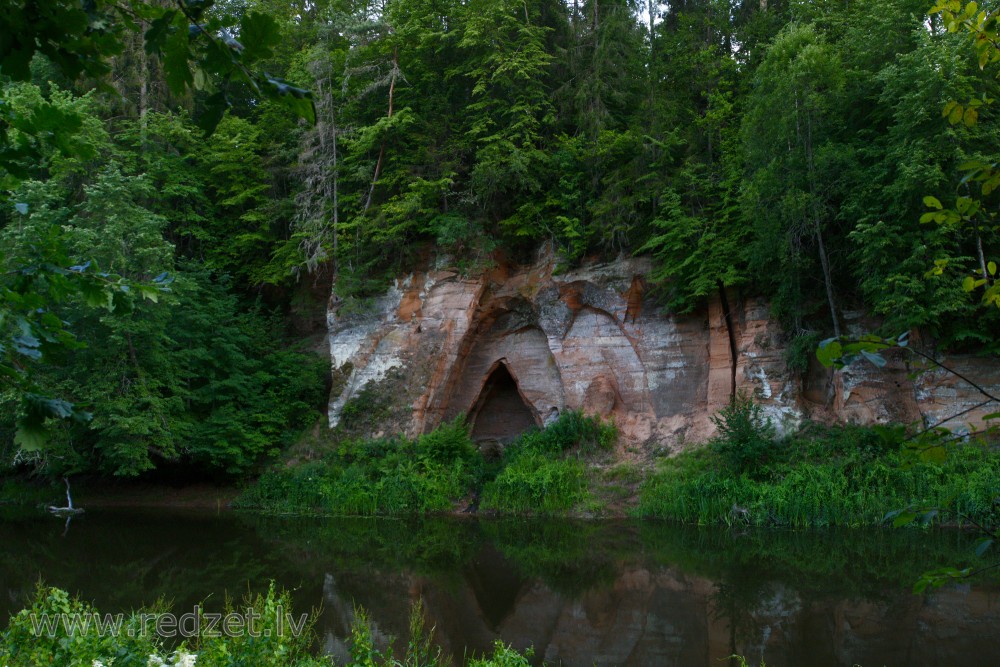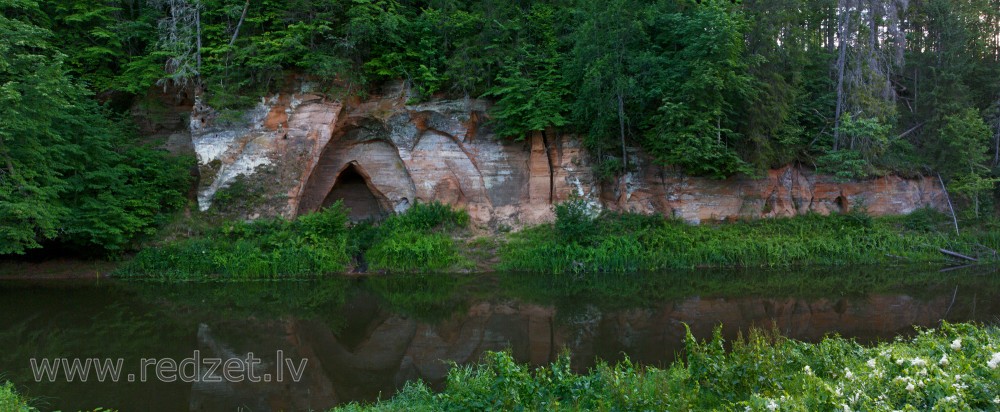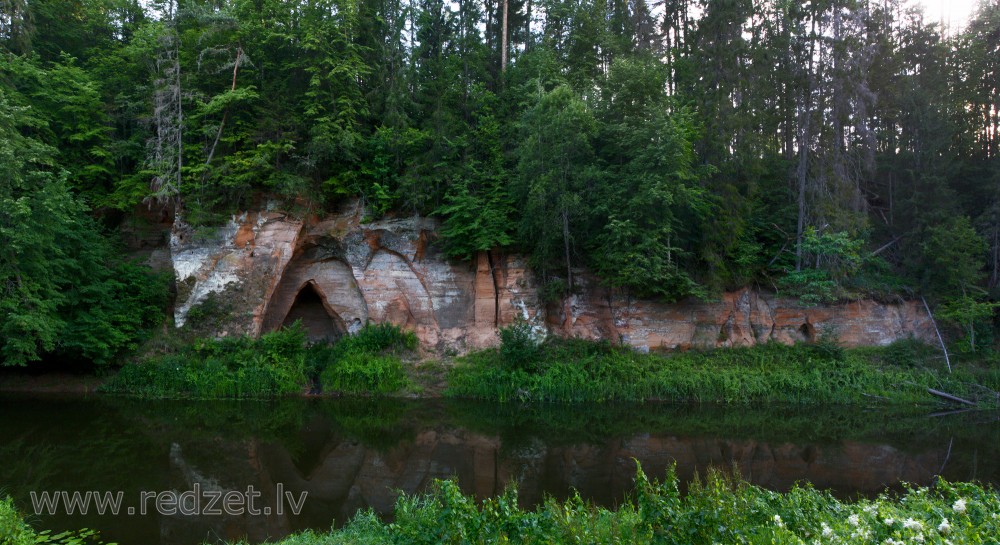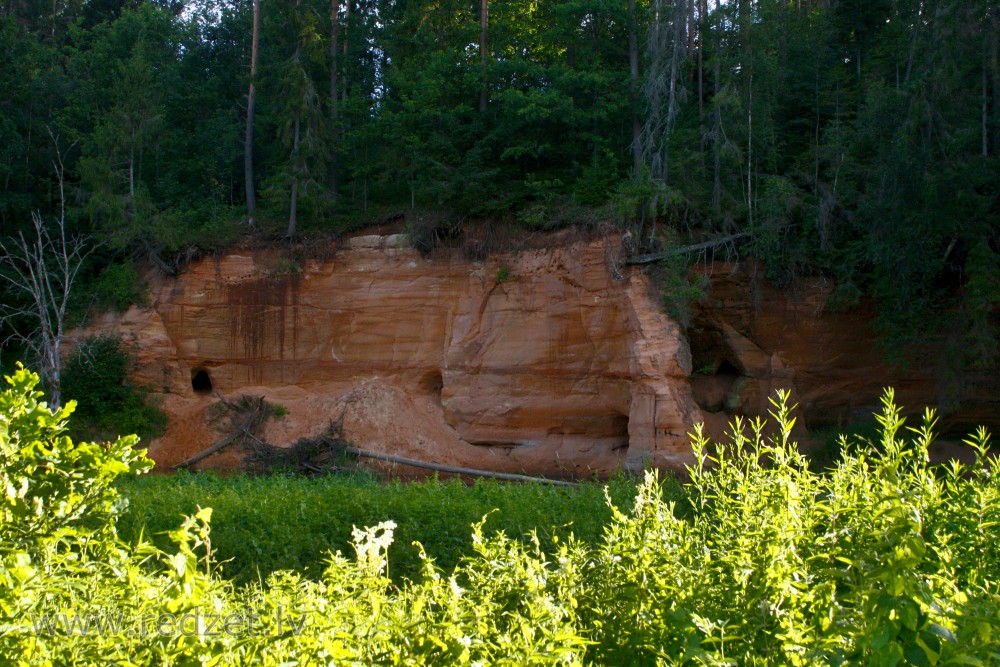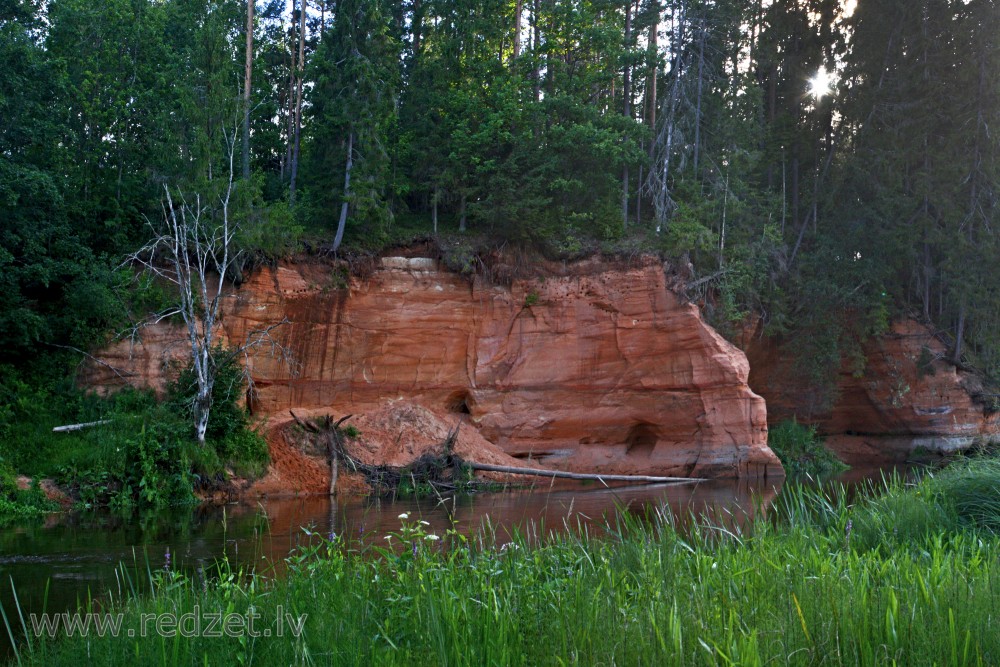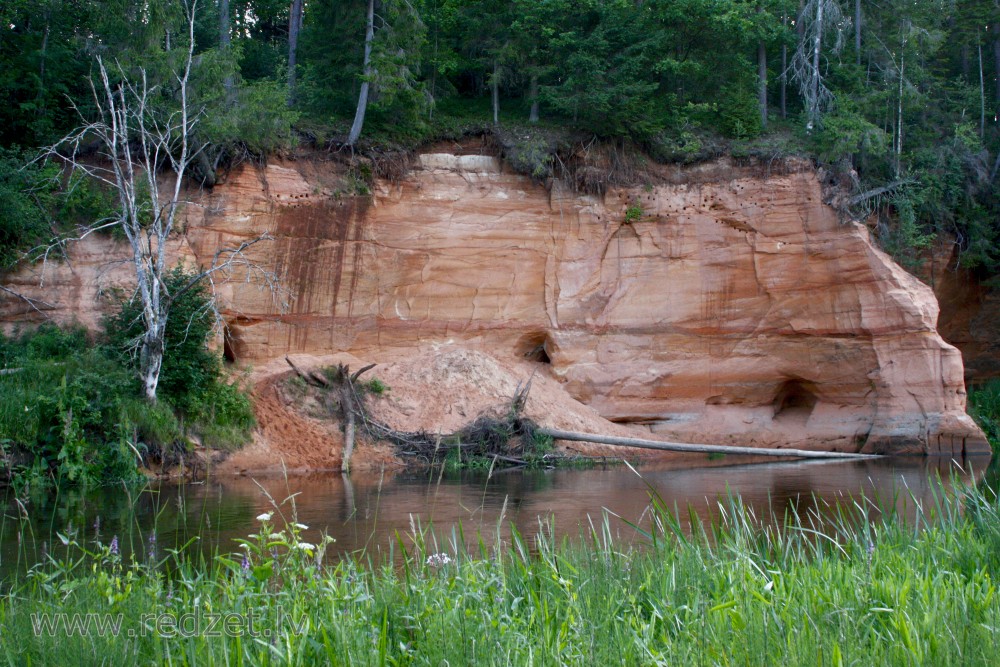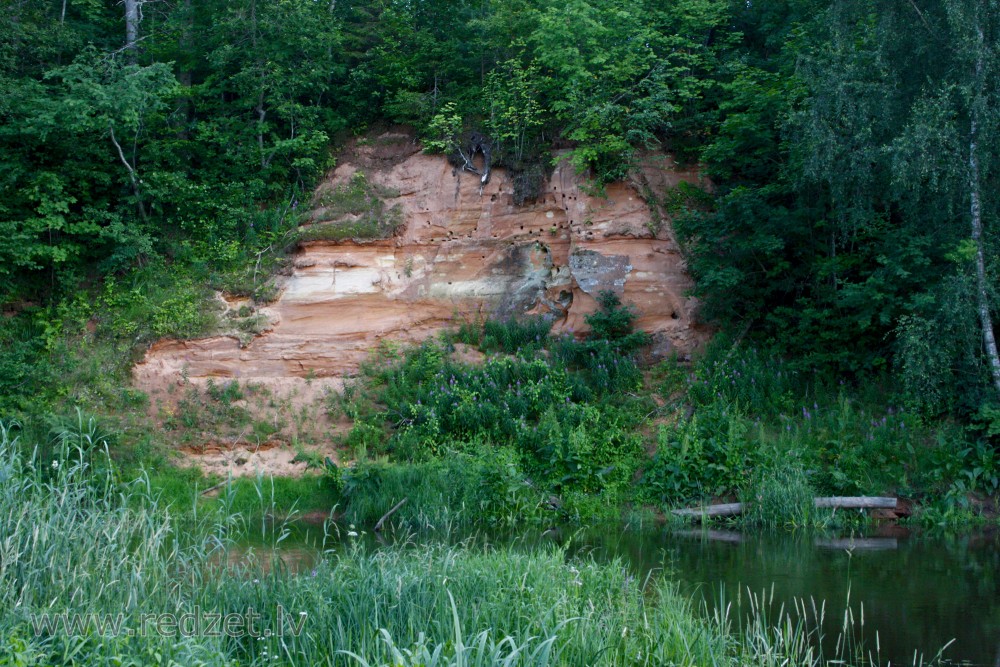Skaņaiskalns Nature Park
The unusual beauty of Skaņaiskalns Nature Park offers enjoyment and relaxation any time of the year. When you hear the name "Mazsalaca" the first what comes to mind is the beautiful valley of the river Salaca with colorful sandstone cliffs and many caves along the river banks. And it is no wonder - Skaņaiskalns Nature Park is very popular among travelers, especially during bird cherry blooming time or golden autumn leaves time. The park is spread acros the right bank of the river Salaca in the lenght of 3 kilometers.
The river Salaca is the 5th longest river in Latvia and it is known as one of the rivers where Baltic salmons spawn. The Salaca is 95km long and 2.5 - 4m deep. It ouflows from Lake Burtnieks. The river Salaca and it tributaries make one of the most magnificent places in Latvia. Steep sandstone rocks with numerous caves are remarkable geological monuments protected by government. Along the banks of the river Salaca there are numerous glens, springs, secular stones and trees. Because of the beautiful landscapes Salaca is popular among water-tourists.
In the Forest education and leisure trail the visitors can get acquainted with the variety of nature in the Nature Park. Since the spring 2008 it is possible to go along 10km long, partly landscaped Dauģēni nature trail, that leads along the right side of river Salaca starting from Echo Cliff Skaņaiskalns to the entry of the river Ramata into the river Salaca.
Skaņaiskalns
Approximately 20 meters high, 90 meters wide sandstone cliff. Surface of cliff is very smooth, parabolic; it has got unique echo effect. Beautiful view opens on Salaca valley from the top of cliff. You can see caves at the both sides of cliff.
Devils cave
16 metres long cave, part of earlier larger cave - ancient cult site. In the second half of 19th century cultural layer in the cave was studied - nowadays it has been covered with thick layer of sand falling from the ceiling of cave. First excavations at the entrance of the cave done in 1876 - there was found archaeological layer with charcoal. Later it was covered by large landslides. J. Urtans made an unsuccessful attempt to reach this archaeological layer in 1985. This unique formation is located high above the river.
Sour Barrel or Pickling Barrel
Sour Barrel is located under the Devil's Cave, on the bank of the Salaca, where the spring flows out of the cliff. The odds are that it flows out from the Devil's Cave. The clear and cold spring water slakes one's thirst on hot summer days. The legend: The Devil, running out of the cave, overturned vessel with sourness( a drink for inhabitants of Vidzeme), therefore this place where spring flows out is called as Sour Barrel.
Dream Stairs
On the right side of the Salaca, where it makes a turn, there is a path that leads to the bridge where lovers meet. Going upstairs, one should imagine a dream and while counting the steps, one should dream about this imagined dream. It will cone true if you believe in it very strongly. If the though bursts or the number of stair steps mixes, this dream will not come true.
There is a legend that the baron of Waltenberg Manor had hired a young man as a supervisor of the manor. The Baron had two daughters. The young supervisor fell in love with the one of them, Eleanor. The young lady was not indifferent as well. When old baron was called to St.Petersburg to manage business in summer, the supervisor and baroness were meeting secretly in the place, where Dream Stairs can be found now. In order to guard their secret from the people of manor, both lovers went to Dream Stairs by different roads. The supervisor had ordered to build the stairs so the baroness could climb the steep bank easier. Unfortunatley the young people couldn't guard their secret. When the old baron returned from St.Petersburg and found out about his daughter's affair with the supervisor, he sent his daughter to Italy immediately in order to study and improve her health. The supervisor fell ill and died because of grief.
Carnation Cliffs
Carnation Cliffs are scenic red sandtone outcrops, 300m long and 40m high. They are also called as Devil's Cliffs. There is a notably beautiful view to cliffs from Devil's Pulpit. Once on the cliff walls there grew white, odorant wild cornations, therefore it is called Carnation Cliff. In the 60-ies of the 20th century, carnations were pulled out with all roots, and they were considered as died out, but recently they have been found again in inaccessible places.
In 2007 during the expedition explorers found a new unknown before cave, 140m from upper end of the cliffs.
www.mazsalaca.lv

